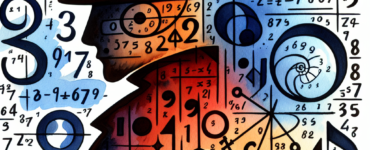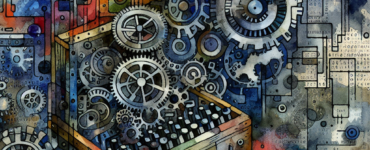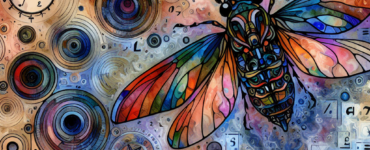Have you ever wondered if there’s a secret code to the way trees branch, flowers bloom, or even how fruits are formed? The answer is yes, and it’s hidden within the Fibonacci Sequence, a series of numbers that has fascinated mathematicians and scientists for centuries. This sequence starts with 0 and 1, and each subsequent number is the sum of the two preceding ones, for example, 0, 1, 1, 2, 3, 5, 8, 13, 21, and so on. But how does this relate to nature’s design?
The Fibonacci Sequence is not just a mathematical curiosity; it appears throughout the natural world in an astonishingly diverse range of contexts. For instance, the arrangement of leaves around a stem1, the branching of trees, the flowering of an artichoke2, the spirals of a pine cone3, and the famous nautilus shell all display this sequence or the associated “golden ratio,” which is approximately 1.618033988749895.((https://letstalkscience.ca/educational-resources/backgrounders/fibonacci-and-golden-ratio)). This ratio, or its close approximations, can be found by dividing a number in the sequence by its predecessor as the sequence progresses towards infinity.
But why does nature favor this pattern? Scientists believe that the Fibonacci sequence and the golden ratio contribute to the efficiency of natural structures. For example, the arrangement of leaves or petals according to this sequence allows for optimal exposure to sunlight and rain. Moreover, these patterns facilitate the most efficient packing of seeds in fruits and the distribution of branches around a tree trunk, maximizing each plant’s ability to gather resources and reproduce.((https://www.montananaturalist.org/blog-post/flowers-the-fibonacci-sequence/)).
Another fascinating manifestation of the Fibonacci sequence is in the population growth of rabbits, a problem that originally led Fibonacci himself to explore these numbers. Assuming a pair of rabbits matures and produces another pair every month, the population will grow according to the Fibonacci sequence under ideal conditions. This model, albeit simplified, has helped in understanding population dynamics in more complex systems.((https://plus.maths.org/content/life-and-numbers-fibonacci)).
Despite its prevalence in the natural world, the Fibonacci sequence is not a universal rule. Not all patterns in nature follow this sequence, and the aesthetics or functionality of those that do are not solely attributable to the Fibonacci sequence. However, its widespread occurrence suggests a fundamental aspect of the evolutionary process that favors efficiency and optimality.((https://www.britannica.com/science/Fibonacci-number)).
Let the Fibonacci Sequence be a reminder that beauty and complexity in the natural world often stem from simple mathematical principles. It’s a symbol of the interconnectedness of all things and the underlying order amidst the chaos of the cosmos. Keep looking for patterns, and you might just find the universe whispering its secrets to you.








































Add comment